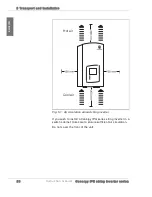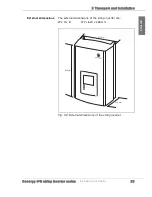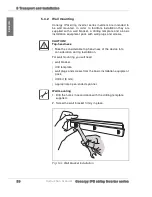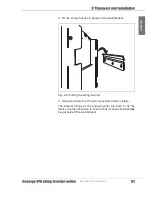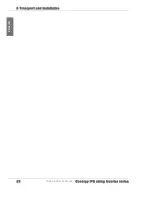
3 4
In st ru c t io n m an u al
C o n e r g y IP G s t r in g in v e r t e r s e r ie s
6 In s t a lla t io n a n d c o m m is s io n in g
E
N
G
L
IS
H
6.2
Preparation for installation
Solar system
By voltage metering on the solar system, you can determine
possible causes of faults (cabling, solar cells in partial
shadow or defective modules) and rectify these prior to
commissioning of the inverter.
Wiring
As a single-phase inverter, the string inverter only supplies
power via phase L1. If you operate several inverters of the
Conergy IPG string inverter series in parallel, the feed phase
of the string inverter must be equally distributed over phases
L1, L2 and L3 of the grid.
Sealing plugs
Before connecting the cables, remove the sealing plugs from
the Conergy IPG series string inverter. Leave all connections
which are not needed sealed, as otherwise the string inverter
will no longer conform to the requirements of IP 65
protection. Keep the sealing plugs. When a service is
required, you can seal the connections off again with the
sealing plugs.
CAN connection
If you have chosen the Internet-based Conergy SunReader
monitoring system, connect the Conergy data logger to the
string inverter using a CAN cable. If you are using more than
one string inverter, connect these with a further CAN cable. If
you use a CAN connection, you must always install a
terminator (120
Ω
) on the last element of the connector. The
terminator is included in delivery of the Conergy SunReader.
Tools required
For the electrical installation of the Conergy IPG string
inverter series inverter, you need the following tools:
| Wire stripper (4–25 mm
2
)
|
Multi-Contact
crimping tool (for MC4 plug)
|
Multi-Contact
key set (for MC4 plug)
| PZ1 screwdriver









